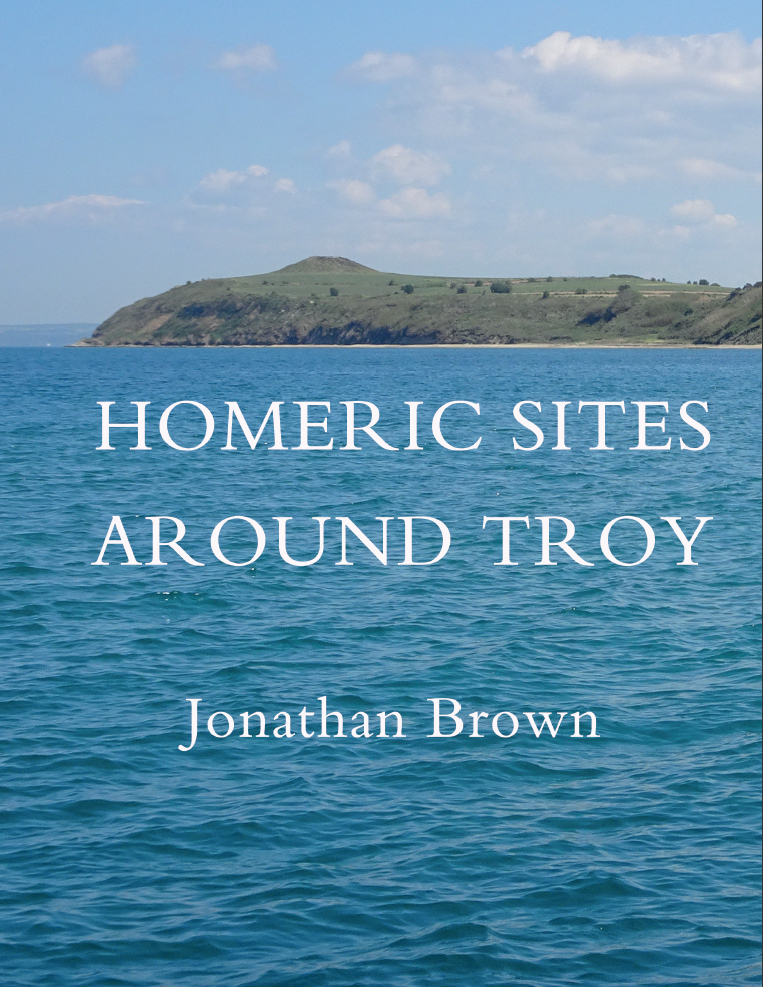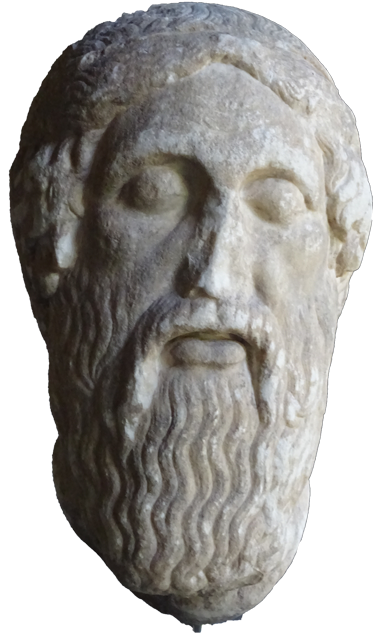Homeric Sites Around Troy
Jonathan Brown
280 pp. - hardback - ISBN 9780987155696 - AU$39
eBook - ISBN 9780646915975 - US$14.99
Published by Parrot Press
on 10 August 2017

Where are the tombs of the Homeric heroes around Troy? Where are the outstanding features of the landscape - the rivers, springs, hills and mountains - that Homer sings so eloquently of in the Iliad? How can we find them? This book will help find the answers.
It is the most comprehensive treatment of the subject since Professor J. V. Luce’s Celebrating Homer’s Landscapes: Troy and Ithaca Revisited was published by Yale University Press in 1998.
Homeric sites around Troy traces the historical and contemporary search for the sites referred to by Homer in the Iliad and the Odyssey, and by others in the Trojan Cycle. These include the rivers Scamander and Simois, Mt Ida and Gargarus, the Hellespont, and the ship stations and ports of the Achaeans and the Trojans. Above all, it searches for the tombs of the fallen heroes:
- The Tomb of Laomedon
- The Tomb of Myrina
- The Tomb of Ilus
- The Tomb and Grove of Hector
- The Tomb of Priam
- The Tomb of Paris
- The Tomb of Aesyetes
- The Tomb of Ajax
- The Tomb of Achilles
- The Tomb of Patroclus
- The Tomb of Antilochus
- The Tomb of Hecuba
- The Tomb of Protesilaus
The reported visits to the sites are illuminating. In some cases, the author suggests locations that differ from tradition.
The book reproduces many antique and old maps, summarizes the results of archaeological excavations, presents two new maps, contains many annotated excerpts of satellite imagery, and has many beautiful full-colour illustrations.
There is much to be discovered in the book, and even more on the ground. Homeric sites around Troy is both evocative background for the reader of the Iliad, as well as a well-informed companion for a visitor to Troy.
What the critics are saying
"This beautiful book is best understood as a description of men’s efforts down the millennia to find in Homeric epic an accurate account of either a historical Trojan war or of Homer’s perception of it, or a mixture of the two. Seen in that light, it is an enjoyable read and an even greater delight for the eyes.” Peter Jones, Classics for All (UK).
About the author
Jonathan Brown studied Latin and ancient history at the Australian National University in Canberra. He is a former Australian diplomat and international lawyer, and author of several books on the music of Richard Wagner, most recently Great Wagner Conductors: a listener’s companion (2012).
Which format to buy?
The printed book
Pros
- a sturdy, handsome hardback produced to the highest standards
- printed on acid free paper using the seamless stochastic screening process (no dots)
- vibrant and flawless colour illustrations, including historical reproductions
- two-page-spread maps and illustrations viewed to their best advantage
- original maps easy to refer to inside the front and back covers
- no slippery dust-jacket
- normal size for a bookshelf: 30cm x 22cm x 4cm (12” x 8½” x 1½”)
- preview available on Google Books
- printed book available for $35 from the Ithacan Historical Society in Melbourne, Victoria, Australia.
- used copies may be available from Abebooks or booksellers found through BookFinder.com
- or read the book in a library near you
Cons
- an extra 1.2 kg (2½ lbs) in your luggage to Troy
The Ebook
Pros
- the Google Play edition mirrors the pages of the printed book
- contains bonus sections “List of videos of the sites” and “How to get there”
- saves 1.2 kg (2½ lbs) in your luggage to Troy
Cons
- no substitute for the pleasure in turning pages of a printed book
- not available for Kindle because the book's design does not suit free-flowing text
